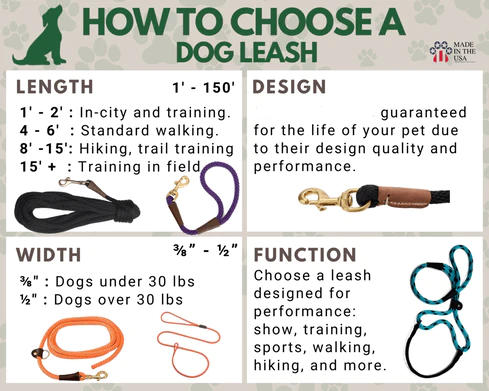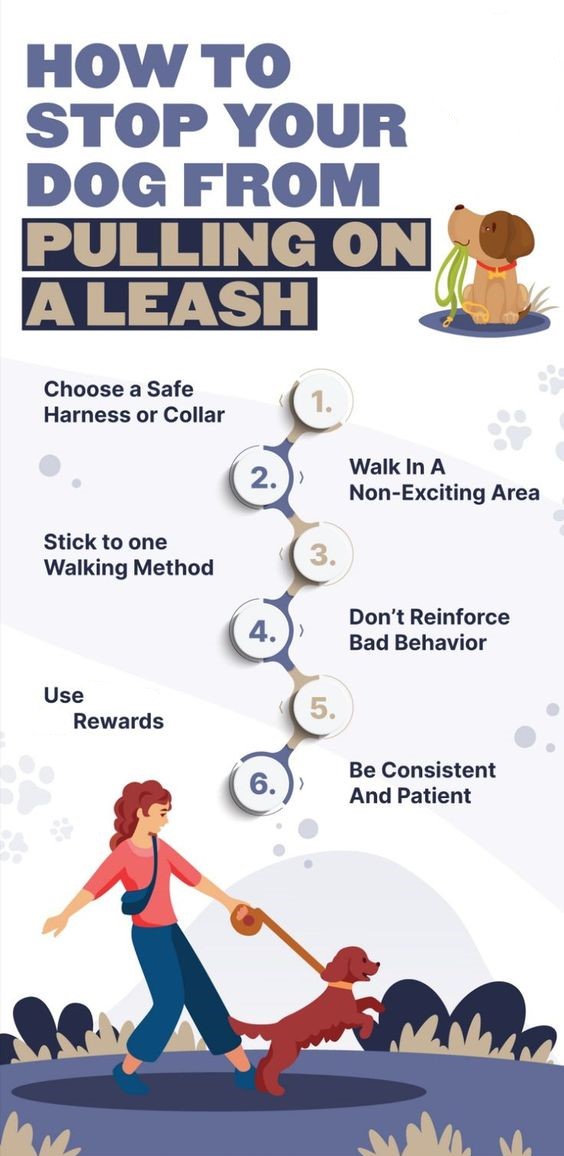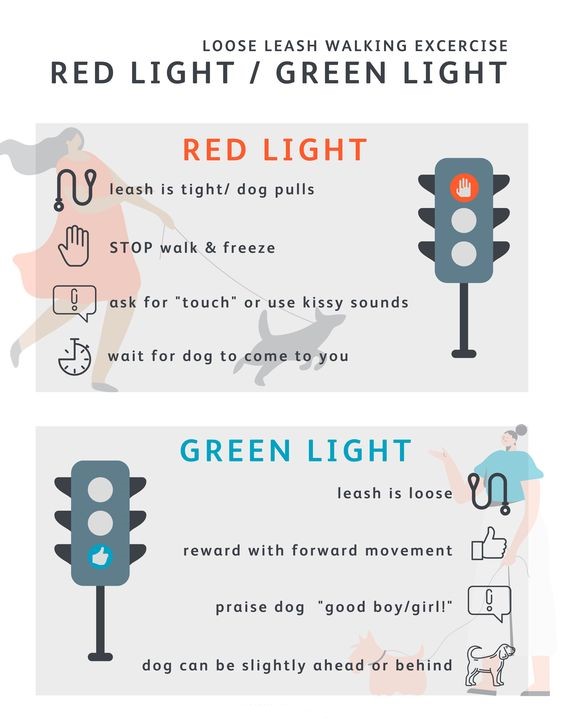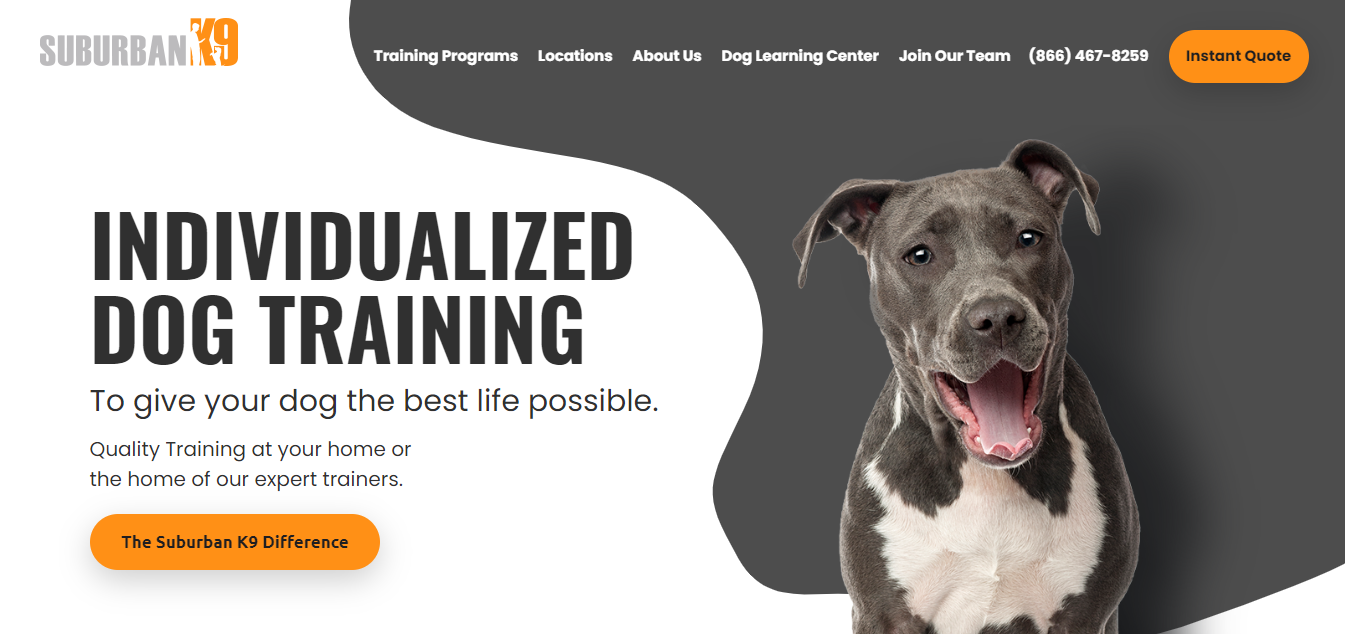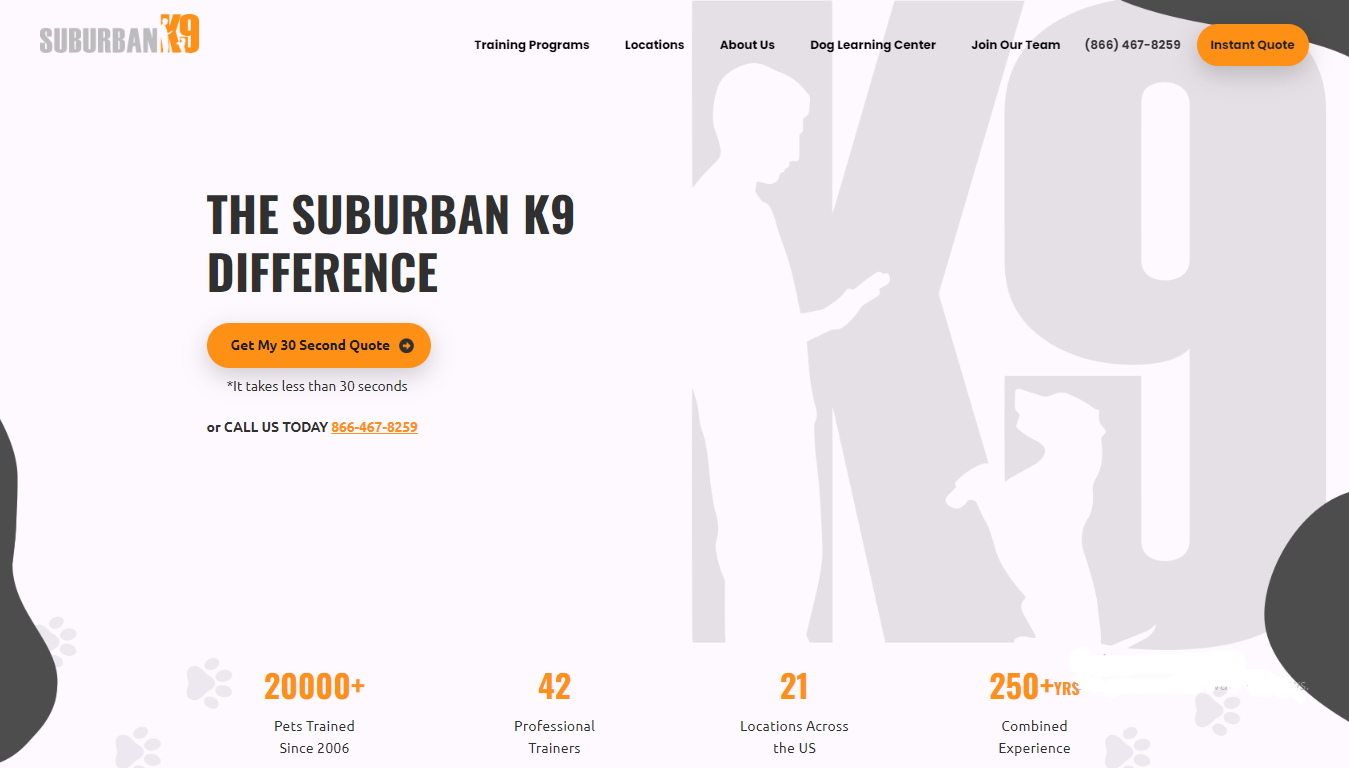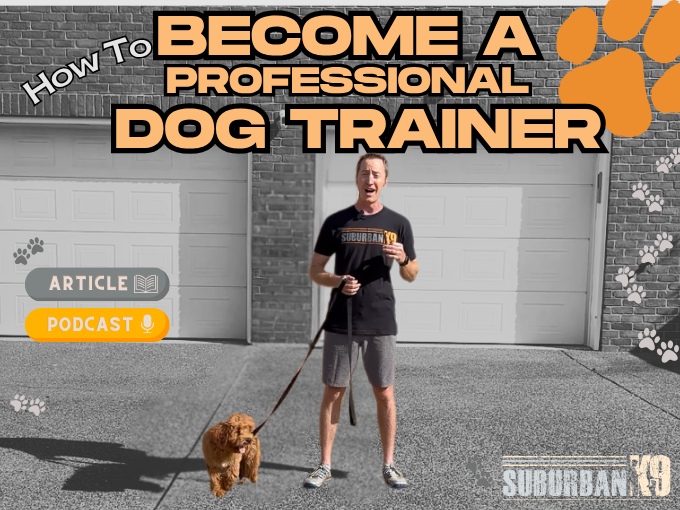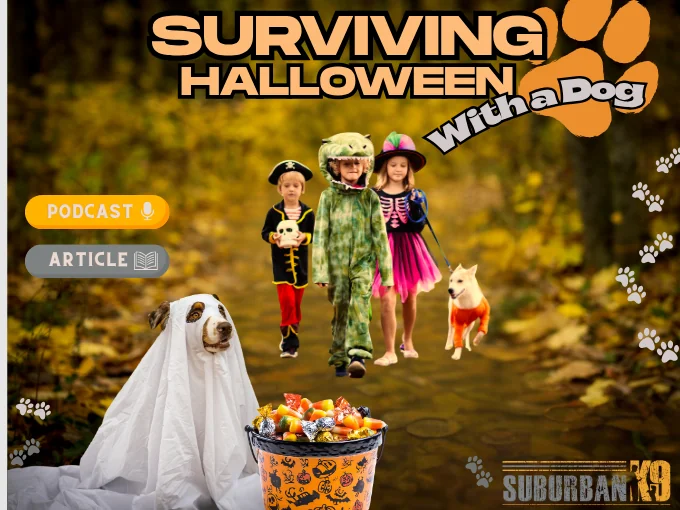Your leisurely walk in the park with your dog can take a nightmarish turn when it drags you along like a canine-powered locomotive. God knows if it’s taking its leash as a ticket to winning the gold medal in the doggy Olympics for pulling with all its might or what. If only you had known how to leash train a dog, your strolls in the park wouldn't be so thrilling.
We understand the frustrations of dreaming about calm, enjoyable walks with your furry friend while battling their relentless pulling. Our article is the golden ticket to turning your “if only” into an “I got this” moment.
Read through our 7 proven strategies to leash train a dog that pulls and how to deal with some common challenges of leash training. By the time you finish reading this article, we promise that you will be jumping out of that door to transform your walk from Tug-o-Woof to Walk-o-Yeah – all by putting our effective leash training techniques to full use.
7 Proven Strategies To Leash Train A Dog That Pulls
Let's get into the nitty-gritty of dog leash training. This is where the real magic happens and you'll be amazed at the transformation in your furry friend's behavior. Remember, while the first 6 strategies work hand in hand and complement each other, the last strategy is something that will take away all your worries in a jiffy. So read on to find more.
1. Understand Leash Training Basics
First things first, you need to equip yourself with the right tools before you start leash training. Choose a leash and collar or harness that suits your dog's size and needs. Avoid using choke collars as they can be painful for your dog.
A nylon or leather leash is usually a good option. Regardless of the type, a sturdy leash with a comfortable grip and an appropriate collar or harness will make all the difference.
Now it's time to introduce your pup to the leash. Start by letting them sniff it and become familiar with its presence. As they start to show positive interest, it's time to reinforce this behavior. Show your enthusiasm and offer rewards like treats, toys, and physical or verbal praise when they interact with the leash in a calm and relaxed manner.
However, it's important to use positive reinforcement sparingly because our ultimate goal is for your dog to respond to our commands whether or not we have a treat in our hands.
Gradually increase exposure and handling of the leash. Start by gently attaching it to your dog's collar or harness for short periods while they are indoors. This helps them get accustomed to the feeling of wearing a leash without any distractions.
If your puppy starts biting or chewing on the leash, redirect their attention to reinforce the idea that biting the leash is not desirable behavior.
2. Start Indoors With Minimal Distractions
Find a quiet and comfortable area in your home where you can focus on teaching your pup the ropes of loose leash walking. By choosing a peaceful spot, you create an atmosphere that promotes focus and learning. This allows both you and your pup to dedicate your attention to the task at hand.
Remove any tempting objects or potential hazards from the training area. We want your pup's undivided attention so it's important to eliminate anything that could divert their focus from the training session.
You wouldn’t want your pup tempting for a chew toy or a shoe lying around. Also, make sure that there are no potential hazards in the training area. Keep an eye out for loose cords, sharp objects, or fragile items that could pose a danger to your dog during the training session.
During indoor puppy leash training sessions, be authoritative and assertive in your commands and use clear and consistent verbal cues. Start by holding the leash with a relaxed grip and keep it loose, allowing some slack. Practice walking and encourage your dog to walk beside you by offering treats or praise (without going over the top) when they stay close and follow your lead.
3. Take The Training Outdoors
First off, make sure your dog is wearing proper identification tags with up-to-date contact information. In case they accidentally slip out of their collar or harness, these tags can be a lifesaver in reuniting you with your furry friend.
When it's time to venture outside, choose a quiet and familiar location for your initial outdoor training sessions. This could be your backyard, a nearby park, or any other area where there are minimal distractions. Starting in a controlled environment allows your pup to gradually acclimate to the sights, sounds, and smells of the great outdoors.
Remember the technique we learned during indoor training? Well, it's time to put it into action outdoors! Start walking with your pup by your side and keep that leash loose. As you take those first steps, use clear commands to guide your pup's behavior.
As your dog becomes more comfortable with outdoor walking, gradually introduce them to more distractions. This could include encountering other people, dogs, or even enticing scents. Remember to keep a calm and assertive demeanor, providing clear commands to keep their focus on you.
Maintaining a calm state of mind is crucial when it comes to leash training a dog that pulls. We want to ensure that your furry companion isn't in prey mode, constantly scanning the surroundings for something to focus on. To address pulling behavior when encountering other dogs, it's important to tip the scale in favor of positive interactions.
Here's the plan: ask your friend or family member who has a dog to bring it and ensure it remains stationary at a designated spot. As you approach their dog, maintain a steady pace and keep your dog's attention forward. Avoid stopping or shouting at your pup, as these reactions only exacerbate the issue. Instead, continue walking past the other dog while maintaining forward momentum.
If your pup continues to look back at the other dog, provide short, gentle tugs on the leash while offering verbal encouragement. This combination helps redirect their attention and breaks their fixation. Keep at it until your dog regains their calm composure and focuses forward again.
Once your dog achieves a state of calmness, it's time to put their progress to the test. Turn around and walk back past the other dog, reinforcing the positive behavior they displayed. This repetition solidifies their understanding that remaining calm and focused is the desired response during these encounters.
4. Implement The "Stop & Stand Still" Technique
Your dog should never be ahead of you. Encourage them to walk calmly beside you or slightly behind you. When you notice your dog pulling on the leash during your walk, it's time to take action. Immediately bring the walk to a halt by stopping and standing still. Maintain a firm and confident posture, establishing your leadership.
By pausing and standing still, you send a clear message to your dog that pulling won't get them anywhere. It's a moment to teach them that progress only happens when they walk politely by your side.
Here's the key: resist the temptation to resume walking until the leash becomes loose and your dog regains their composure. This step requires patience. Walk forward only when you feel the leash relax, indicating that your dog has eased up on the pulling.
Remember, the goal is for your dog to understand that pulling causes a pause in movement while walking calmly on a loose leash brings about forward progress.
Note that if your dog starts pulling when they see other dogs, follow the technique that we’ve covered in the last step.
5. Practice U-Turns
Now that your dog is showing some encouraging progress in their leash training, it's time to introduce them to 180° turns. This technique helps them refocus if they start pulling or get easily distracted. It's an effective way to reinforce their understanding that staying by your side is the desired behavior.
Begin by positioning your dog on your left side, making sure they are familiar with this walking position. Now it's your turn to take the lead. Execute a smooth left U-turn, pivoting in the opposite direction. This action teaches your dog to swiftly adjust its movement and follow your lead. Remember, practice makes perfect.
Keep practicing U-turns during your walks until you notice your dog gradually slowing down each time you turn. This indicates that they are becoming more responsive and attentive to your movements. Celebrate their progress and continue to reinforce this behavior through consistent practice.
U-turns also serve as a test of your dog's attentiveness to you. It's an opportunity to gauge how well they respond to your commands and how connected they are during the walk.
Beyond testing their attentiveness, U-turns reinforce the fundamental principle of walking in the opposite direction of pulling. By changing direction when your dog pulls, you help them understand that pulling won't lead them forward but instead prompts a change in course.
6. Teach The "Heel" Command
When it comes to dog training for leash, teaching your dog to heel is more than just preventing them from pulling. It's about achieving a calm and submissive state whenever you need it. Proper heeling not only stops pulling but also helps control your dog's excitement and potential aggression. By having your dog walk right by your side, they see your presence as a constant reminder, allowing them to focus on you and the road ahead.
Typically, the left side is the traditional side for walking a dog but you can choose whichever side works best for you. Consistency is key, so make sure that everyone in the family walks the dog on the same side. To start the leash training process, allow your dog to burn off some energy through play so they are in the right mindset to learn. Then attach the leash and collar and confidently command "heel" as you begin walking.
As you walk, avoid restraining your dog. Instead, use short, gentle tugs while saying "heel" to keep them in position. If your dog starts pulling ahead, give a firm tug straight back to remind them of the proper positioning. Remember, your goal is to keep their focus on the road ahead so if they get distracted to the side, give a slight tug in the opposite direction while reiterating "heel."
Include the left U-turns that we discussed previously. Teach them right turns as well and follow a similar pattern. As you prepare for a right turn, engage with your dog and talk to them in an upbeat and encouraging tone. Remember, clear communication is key. So as you initiate the right turn, use their name along with the command "heel." By doing this, you capture their attention and pique their interest, making them eager to turn with you.
In the beginning, expect your dog to constantly try to forge ahead. This is normal. Stay patient and persistent, consistently guiding them back into the proper heel position. With time and practice, your dog will learn to stay focused on you and the path ahead, ignoring distractions that come their way.
By mastering the art of heeling, you'll have better control over your dog's behavior and reactions. They will see you as their leader and be less likely to react excitedly or aggressively to external stimuli.
7. Enlisting The Help Of A Professional Trainer
If you've tried various techniques and still find yourself struggling with leash training your dog, it may be time to get the help of a professional trainer. That's where Suburban K9 comes in! Established in 2006, we at Suburban K9 have earned a reputation as a trusted and experienced dog training company.
With a team of 42 skilled trainers and a track record of successfully training over 20,000 dogs, Suburban K9 is equipped to help you tackle the challenges of leash training. Whether your dog continues pulling, struggles with distractions, or exhibits fear or anxiety-related pulling, our trainers have the knowledge and expertise to guide you through the training process.
At Suburban K9, we've developed a highly effective training approach called balanced training that works wonders for leash-training dogs that pull. Our method combines the power of positive reinforcement with fair corrections when necessary, ensuring your pup learns the proper behaviors and respects boundaries.
While positive reinforcement, such as treats and praise, plays a crucial role in our training, we believe it's equally important to introduce fair corrections to teach your dog about limitations and establish your leadership. By setting clear boundaries, you'll show your pup that you're a strong and confident leader they can rely on during walks.
Unlike relying solely on treats and praise, which can limit your dog's understanding of obedience, our balanced training method provides a comprehensive and well-rounded approach. It allows your dog to grasp the concept of good leash manners and ensures they respond consistently, even in challenging situations.
However, let's set the record straight. We firmly reject the use of bullying or any inhumane techniques in dog training. We understand that such methods can cause your dog to feel submissive and fearful of you which is not our goal. Instead, we prioritize establishing a strong foundation of trust and respect between you and your canine companion.
This requires patience and consistency but the results are truly rewarding. Our training methods focus on nurturing your dog’s instincts and intelligence while also providing them with clear boundaries and guidance.
Leash Training Troubleshooting: 4 Techniques To Address Common Challenges
Here are 4 proven ways to address some common problems that you’ll come across when leash-training your dog.
A. Dealing With Persistent Pulling
When your dog continues pulling despite your efforts, it's time to reassess the situation. Start by identifying potential causes of this behavior, like a high prey drive or a lack of focus. Adjust your training approach accordingly and use techniques specifically designed to combat pulling.
B. Addressing Distractions & Overstimulation
Dogs can easily get distracted or overstimulated during leash training which makes it challenging to maintain good leash manners. Gradually introduce distractions into your training sessions, allowing your dog to build tolerance and focus in the face of distractions.
Employ techniques that help refocus their attention back on you and reinforce the importance of staying engaged during walks. Gradual exposure to challenging environments will further enhance their ability to cope with distractions.
C. Ensuring Safety During Leash Training
Safety should always be a top priority when working with an adult dog on leash training. Avoid potentially dangerous situations, like busy roads or crowded areas, until your dog masters good leash manners. Properly secure the leash and equipment to prevent any unexpected incidents or escapes.
D. Overcoming Fear Or Anxiety-Related Pulling
Some dogs may exhibit pulling behavior because of fear or anxiety. Identify signs of fear or anxiety in your dog, like trembling or avoidance behaviors. Implement confidence-building exercises and gradually expose your dog to the situations or triggers that cause them distress. With time and patience, they will learn to navigate these situations calmly, resulting in improved leash manners.
Stop Leash Pulling FAQ
Dogs tend to pull because they find out that it works. They pull on the leash and it gets them where they want to go. Most dogs that are pulling have not been taught to walk politely. Things like excitement and rewarding awarding pulling tend to reinforce the behavior.
You can begin leash training with your puppy as early as 8 weeks old. At this age your goal is to get them used to being on the leash and simply walking with you. It’s really never too early to introduce calm walking habits. Any sessions should be short to avoid tiring the puppy.
We feel like the majority of harnesses on the market help a dog pull as it gives them their entire body to pull against you. We'd prefer you to use a properly fitted training collar for a dog that pulls. Make sure to consult with an expert trainer on how to use training tools properly as consistent training and proper guidance are key to reducing pulling on the leash.
Yes. Professional dog trainers like at Suburban K9 will custom tailor the right method for your dog and show you how to build good habits on your walk. We specialize in helping dog owners fix leash pulling. If you would like help, check out our In-Home Training option.
Most dog owners will see progress within a few sessions with a professional trainer. Consistent practice and following the trainer's instructions is key to success. Every dog is different and different circumstances, like distractions, will impact the success of your work toward getting your dog walking nicely on leash.
Conclusion
The journey of transforming your overenthusiastic puller into a well-mannered, leashed champion may not be as simple as stealing candy from a baby. But learning how to leash train a dog is a sure investment in building a harmonious bond between you and your furry friend for life.
So remember, leash-training a dog is all about building trust, fostering communication, and ensuring the safety and happiness of both of you during your walks. While you are at it, it’s not only your doggo who deserves to be rewarded with a treat but also you – ok maybe you can sneak in two.
At Suburban K9, we understand that every dog is unique and demands to be handled with a tailored yet effective approach. For our expert trainers, training is a journey that needs apt instructions and lots of motivation to reach the goal.
We have all the right things that ensure guaranteed success in training your dog, be it our in-home training lessons, behavior modification training, or dealing with leash aggression. Book a free consultation with us and be a part of this experience.
